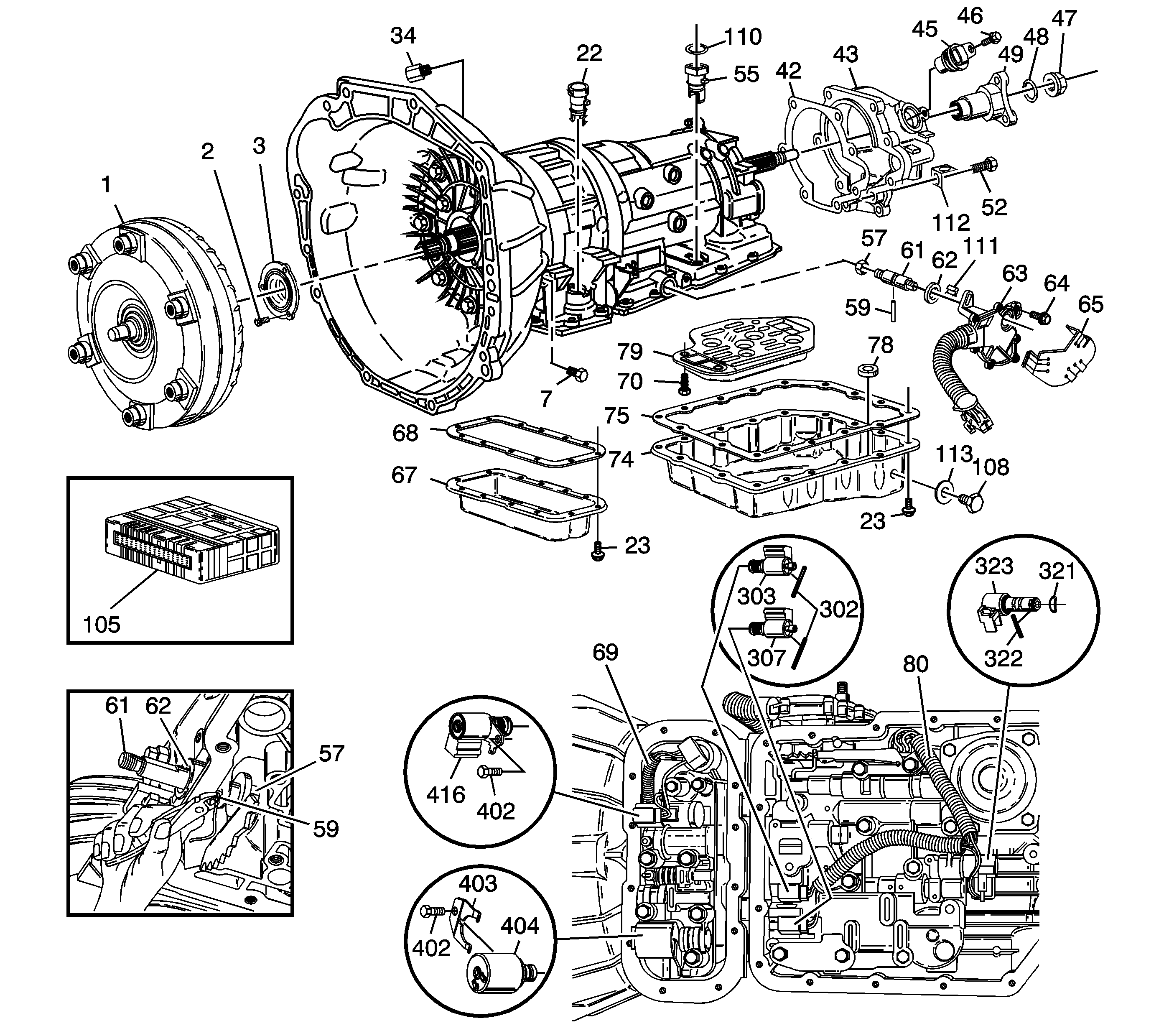
| Subject: | 4L30-E Automatic Transmission Service Policy Procedure |
| Models: | 1997-2001 Cadillac Catera |
| With 4L30E Automatic Transmission |
This bulletin is being revised to correct a statement in the Fluid Checking
Procedure after SRTA installation. The word "not" is being deleted
for content accuracy. Please discard Corporate Bulletin Number 01-07-30-033.
This bulletin covers the service policy for Cadillac Catera vehicles
equipped with the 4L30E Automatic Transmission when repairs are being performed
under warranty. This bulletin does not apply to out of warranty repairs. The
only service options available are listed below.
The service policy permits limited on-vehicle service repairs or Goodwrench®
Service Replacement Transmission Assemblies (SRTA) only. Goodwrench® SRTA
transmissions and limited service parts can be ordered from General Motors
Service Parts Operations.
Transmission Pre-Delivery Inspection
TRANSMISSION FLUID LEVEL CHECK DURING THE PRE-DELIVERY INSPECTION IS
NOT NECESSARY UNLESS A FLUID LEAK OR PERFORMANCE CONCERN HAS BEEN DETECTED.
THE TRANSMISSION FLUID LEVEL IS SET AT THE FACTORY PRIOR TO SHIPMENT OF THE
VEHICLE.
Transmission Maintenance
The 4L30E automatic transmission requires no maintenance, oil level
check and/or oil change under normal operating conditions. Under severe conditions
(taxi, police, delivery service, repeated trailer towing, hilly or mountainous
terrain, or city traffic with high 32°C (90°F) ambient temperature),
both the fluid and the filter should be changed at 80,000 km (50,000
mi) intervals.
In Dealership Limited Repair Policy
On-Vehicle Service Parts



